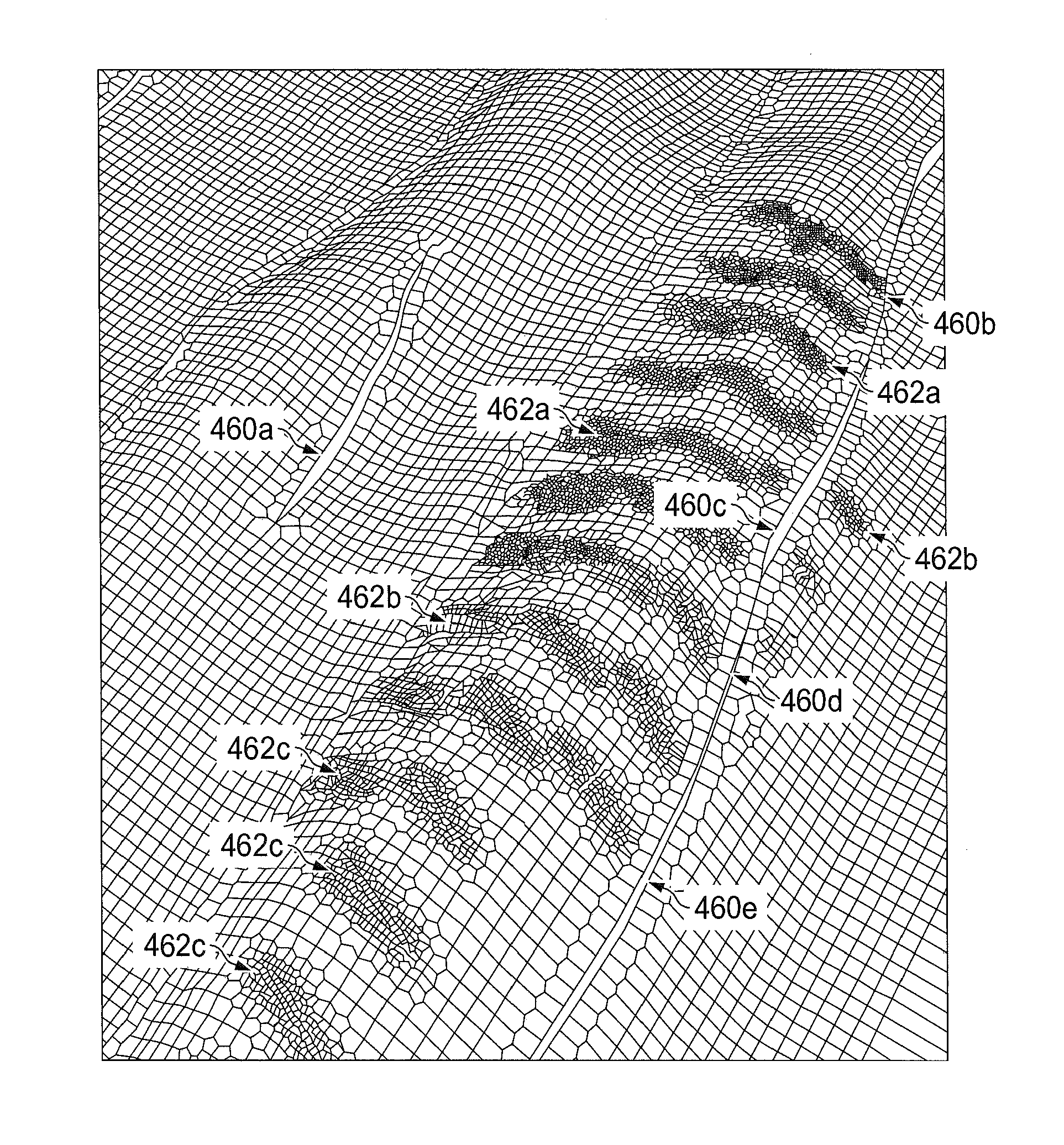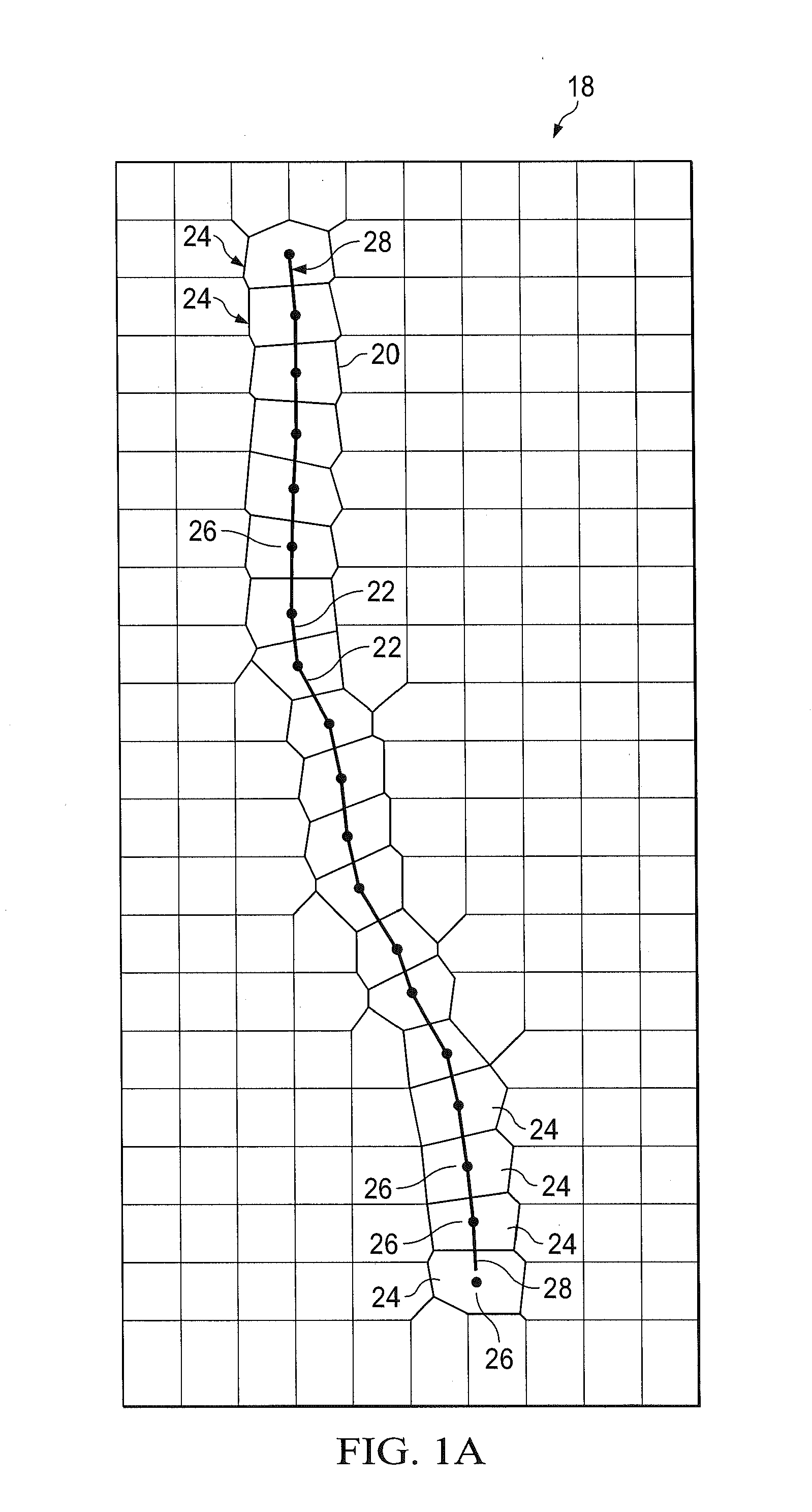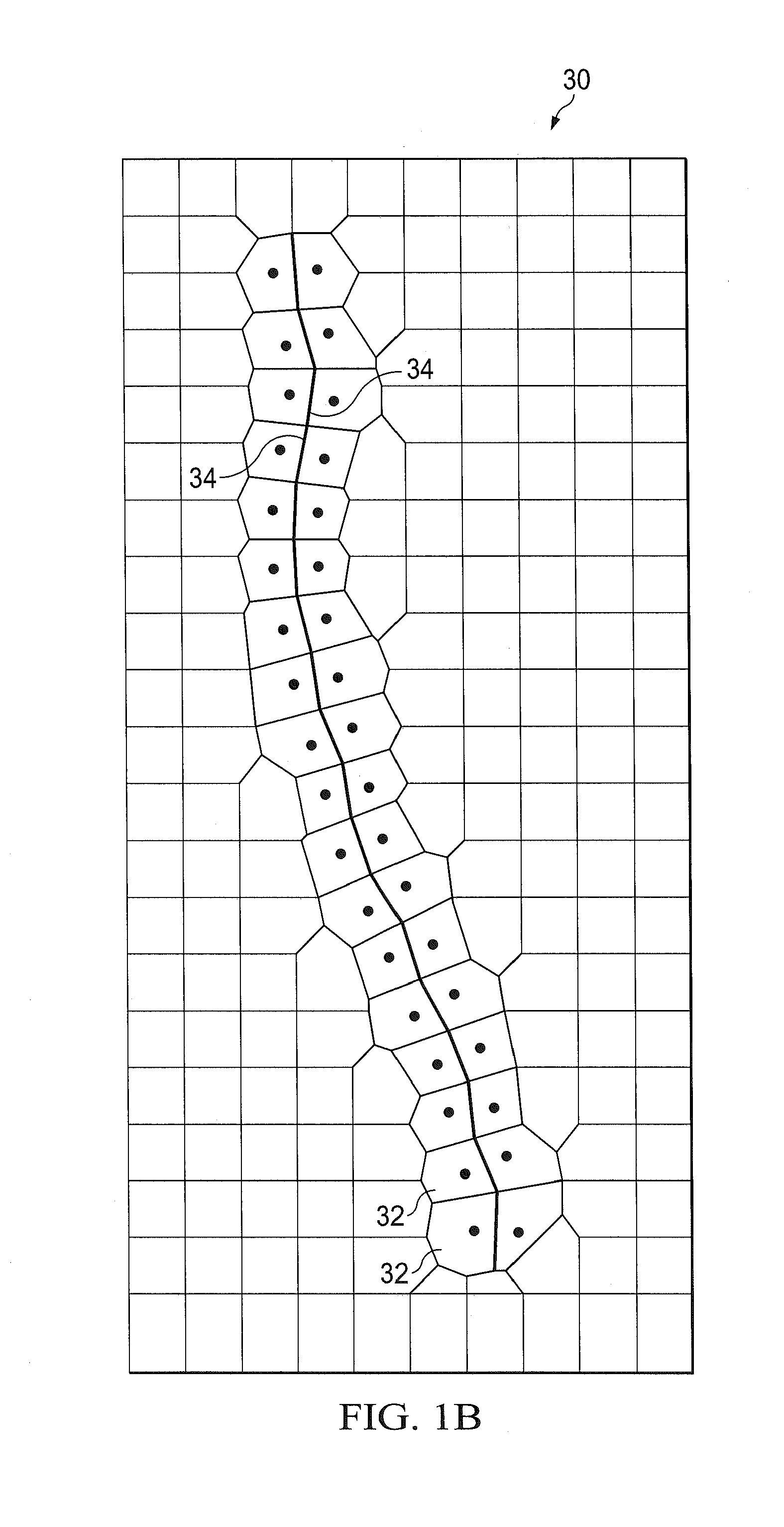Modeling intersecting faults and complex wellbores in reservoir simulation
a reservoir simulation and fault technology, applied in image data processing, analogue and hybrid computing, fluid removal, etc., can solve the problems of complex internal geometry and boundaries that exist simulation technology which uses structured grids or cpg grids cannot adequately represent, and the cpg grid has severe representation difficulties
- Summary
- Abstract
- Description
- Claims
- Application Information
AI Technical Summary
Benefits of technology
Problems solved by technology
Method used
Image
Examples
Embodiment Construction
[0037]In the drawings, FIG. 1A illustrates a Voronoi cell diagram 18 for a boundary grid 20, in which is formed according to Applicant's related co-pending U.S. patent application Ser. No. 14 / 171,815, previously referenced, a model of a complex wellbore 22. According to such application, the wellbore 22 is taken as an internal boundary in the reservoir, and Voronoi cells 24 are generated by aligning cell centers 26 on the wellbore trajectory path 28. In the context of the present invention, internal boundaries according to Applicant's related co-pending U.S. patent application are referred to as Type 1 boundaries.
[0038]In FIG. 1B illustrates a Voronoi cell diagram 30 for a boundary grid 32, in which is formed according to Applicant's companion U.S. patent application Ser. No. 14 / 215,851, filed of even date herewith as referenced, a model of a fault line 34. According to such application, the boundary grid 30 is formed where the Voronoi cell edges align with an internal boundary. The...
PUM
 Login to View More
Login to View More Abstract
Description
Claims
Application Information
 Login to View More
Login to View More - R&D
- Intellectual Property
- Life Sciences
- Materials
- Tech Scout
- Unparalleled Data Quality
- Higher Quality Content
- 60% Fewer Hallucinations
Browse by: Latest US Patents, China's latest patents, Technical Efficacy Thesaurus, Application Domain, Technology Topic, Popular Technical Reports.
© 2025 PatSnap. All rights reserved.Legal|Privacy policy|Modern Slavery Act Transparency Statement|Sitemap|About US| Contact US: help@patsnap.com



